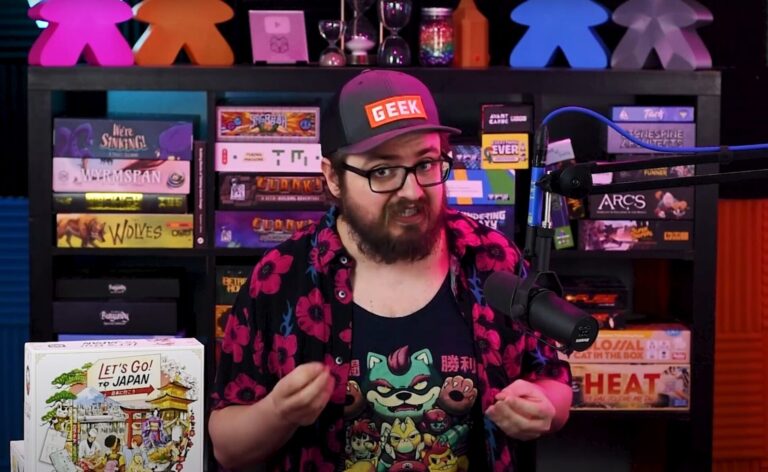
Digging In: How a four-person UK board game design studio turned 58 million-selling video game Terraria into a tabletop crowdfunding hit
Paper Fort Games, a small UK board game design studio with a single game under its belt, could hardly have been more ambitious when it approached video game developer Re-logic with the pitch for its second game – adapting Terraria, one of the biggest-selling video games of all time, to the tabletop.
That ambition has paid off in droves, however – as has Re-logic’s decision to run with Paper Fort’s vision for Terraria: The Board Game. With about 48 hours still to go on the game’s Kickstarter campaign, more than 12,500 backers have pledged over $1.7m to fund the project.
Chris Kingsnorth, lead project developer at Paper Fort, told BoardGameWire, “The truth is, they could have chosen any publisher to work with, but the design ethos of our studios is very similar, they liked our pitch, and there was a feeling of kindred spirits on both sides which happily led to them choosing to work with us.”

Paper Fort’s small size – the team comprises just four core members – may even have worked in its favour during the pitch process, given Re-logic’s own roots as a tiny team developing Terraria ahead of its initial release in 2011.
The Paper Fort team is also an eclectic mix – something Kingsnorth thinks has helped the studio stand out amid the vast mass of large and small board game publishers currently plying their trades in the industry.
He said, “Anka, our graphic designer, came to the studio from industry behemoth (and local Nottingham company) Games Workshop. Matt, our operations manager, was regional supervisor for a chain of escape rooms in Bristol, and James, the company director, came to the board game industry from the world of finance.
“I used to be a paediatrician in the NHS – I started playing hobby games and entering design contests as a way to disconnect from my work. I think the diversity of our skill sets, outlooks and personal experiences are a huge part of what makes our studio shine.”
Crafting 101
Crafting any intellectual property into board game form presents huge challenges, from respecting the source material and ensuring the game ‘fits’ the theme, to the all-important end result: that the game must actually be fun to play.
Kingsnorth said the team naturally researched other successful video game to tabletop adaptations, and tried hard to avoid the pitfalls sometimes associated with that transition.
He said, “Some notable examples included Frostpunk from Glass Cannon, the Stardew Valley adaptation from ConcernedApe, Deep Rock Galactic from MOOD and the various Minecraft-related tabletop games, such as Biomes and Builders.
“Those are all very mechanically diverse games, and the real lesson was this: the adaptations that resonate most with fans are those that feel like the videogame. Very early on, our aim was to make a Terraria board game, not a board game with a Terraria theme.”
For Paper Fort, one of the biggest tasks in adapting the sprawling video game was deciding what parts of the mammoth world to leave out, while still leaving the game recognisable to players of its digital sibling.
Kingsnorth said, “Arguably the biggest challenge was cutting content from the videogame. Terraria is huge – Re-Logic have actively been adding to it for over decade now.
“At the time of writing, the Official Terraria Wiki has over 52,000 pages. There are 571 unique weapons, over 40 potions and 373 enemy types, and that’s just the tip of the iceberg.”
Kingsnorth said Re-logic’s strategy in adapting the 2D mining, crafting and battling game was to split the game into two, dubbed ‘pre-hardmode’ and ‘hardmode’, to ensure it could work on a manageable slice of the game’s world without being overloaded.

He said, “Pre-hardmode essentially represents ‘original’ Terraria, before the huge amount of extra content was added via updates, so we decided that this game will focus on that core Terraria experience. This excluded lots of items, enemies and biomes, which was helpful, but also opens up the possibility of a hardmode expansion in the future.
“This, plus spending time in Terraria forums and watching Terraria content creators was essential in helping us decide what to leave on the cutting room floor. Once we had a proposed content list, Re-Logic gave it a thorough going-over to make sure we hadn’t missed anything important.”
He added, “The tagline of Terraria is ‘Dig, Fight, Explore, Build’, and these four aspects of the game have been the tenets of our design. They are the aspects of the game that make it feel like Terraria, so they are essential.
“Procedural world generation is a core part of the videogame, and it took a long time for us to figure out how to do that on the tabletop. After lots of failed approaches, we finally found a way to represent that part of the game using a hidden minimap and biome tile system; it’s a new world each time you play!
“The other consideration is that as a sandbox videogame, we had to give players the same freedom of choice. We do this using a flexible action point system and some simple deckbuilding; players can choose how to approach the game’s objectives and craft their deck to the playstyle that suits them.”
Digging Deeper
Developing Terraria still marks a significant switch-up in scope for Paper Fort compared to developing its debut game, Cosmoctopus, which raised about $125,000 on Kickstarter towards the end of 2022.

But Kingsnorth said lessons learned from crowdfunding and producing the engine-builder had created a strong platform for working on a larger project like Terraria.
He said, “When Cosmoctopus was in development, we were an even smaller team, which meant that I was responsible for the whole project from prototype to fulfilment. That included playtesting, working with manufacturers, graphic design, liaising with artists, rulebook writing, promotion, creating and running the Kickstarter campaign, customer service and international logistics.
“It was an incredible amount of work, but it means that I have a solid understanding of what is involved in each step of the process (as well as the potential pitfalls). This project is much bigger in scale, both in the scope of design and the logistical needs of the product, but the same core principles apply.
“From a game design perspective, Terraria has been a different project in a lot of ways. We’ve designed it from scratch (whereas Cosmoctopus was designed by Henry Audubon), and creating something new based on a game that’s been around for over a decade requires a whole different approach, as we need to be faithful to the videogame while simplify the mechanisms to be feasible in tabletop form.
“It’s also just a bigger game, with more moving parts, both in the design and in the logistics of getting it made.”
Kingsnorth said the decision to crowdfund the project was by mutual agreement with Re-logic, adding, “We believe that when done well, crowdfunding for board games based on videogames is a fantastic way to involve the community via contests, reveals, polls and updates during the campaign.
“The chance to gather fans of the game in one place and interact in real-time is invaluable; we wouldn’t have that opportunity if the game went straight to retail. Also, it allows us to offer campaign backers exclusive upgrades, promos and more.”
Co-op Experience
Working with Re-logic has proved a smooth partnership, Kingsnorth said, despite the “usual shenanigans” regarding time zones between the UK studio and the US-based video game developer.
He said, “We’ve managed to strike a nice balance when it comes to working together on the game. At the outset, Re-Logic provided certain ‘red lines’ for the design – a big one was requesting that the art not be pixel art – but otherwise they have been very flexible in allowing us to interpret the videogame using mechanisms that work well on the tabletop.
“We are in regular communication, whether that be via email or videocall; they are involved in reviewing art assets, playtesting on Tabletop Simulator and deciding what content from the videogame is included in the tabletop version.”
He added, “Occasionally, communicating how a mechanism works without actually showing it – for example, in an email – can be a challenge, especially in the early stages; this is why tools like Tabletop Simulator are essential when working with outside parties who don’t necessarily play lots of board games themselves.
“However, we often work with outside parties in other countries, such as the artist George Doutsiopoulos and 3D animator Alexei Menardo, so we’re used to remote collaborative working.”
Paper Fort showed off an alpha version of Terraria: The Board Game at the UK Games Expo in 2023 – and was back this year with a significantly-sized booth that was frequently crammed with gamers keen to run an eye over the design.
Kingsnorth said, “The biggest changes [since UKGE 2023] have been a complete art and graphic design overhaul, tightening up the deckbuilding and simplifying the combat system. We’ve also invested a lot of time and effort into building the audience for the game and making sure it’s as faithful as can be.
“Meeting fans and gathering feedback at Essen Spiel and PAX Unplugged last year were particular highlights, as players can be sceptical about IP games but meeting face-to-face gives us the chance to show how much we care about doing a good job.”
Terraria: The Board Game’s Kickstarter campaign runs until Friday, June 21 at 10am ET.






